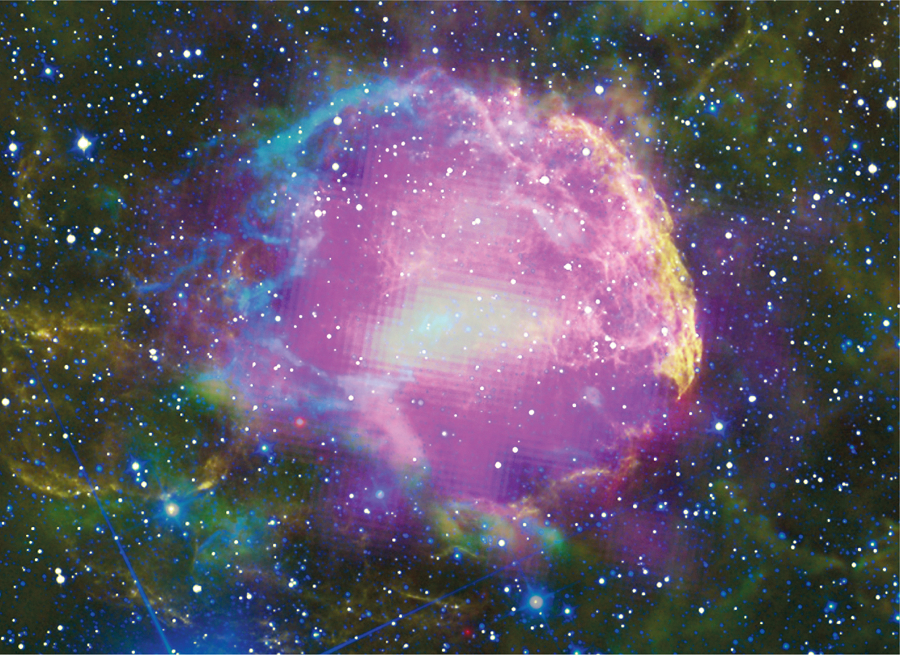
 Credit: NASA/DOE/Fermi LAT Collaboration, NOAO/AURA/NSF, JPL-Caltech/UCLA
Credit: NASA/DOE/Fermi LAT Collaboration, NOAO/AURA/NSF, JPL-Caltech/UCLA
Making the List
Each year the editors of Science magazine review the top science breakthroughs and determine which, in their opinions, merit award as a "breakthrough of the year". In previous years awards have gone to the discovery of the Higgs boson, the use of anti-retroviral drugs to treat HIV-positive people, and the creation of the first quantum machine. This year one of the coveted honorable mentions was awarded to the Fermi Gamma-Ray Space Telescope for the confirmation that supernova remnants accelerate cosmic rays. Cosmic rays are broken bits of atoms accelerated to nearly the speed of light which permeate the Galaxy. The image above shows (in purple) the Fermi Large Area Telescope image of the Jellyfish Nebula (also known as IC 443), a supernova remnant in the Milky Way, superimposed on an optical image of the remnant. The gamma-ray emission seen by the LAT is produced when cosmic rays crash into interstellar gas clouds and confirms that supernova remnants help produce cosmic rays. Our heartiest congratulations to the entire Fermi project.
Published: December 23, 2013
<
HEA Dictionary ● Archive
● Search HEAPOW
● Other Languages
● HEAPOW on Facebook
● Download all Images
● Education ● HEAD
>

Each week the HEASARC
brings you new, exciting and beautiful images from X-ray and Gamma ray
astronomy. Check back each week and be sure to check out the HEAPOW archive!
Page Author: Dr. Michael F. Corcoran
Last modified Monday, 26-Feb-2024 17:44:38 EST


